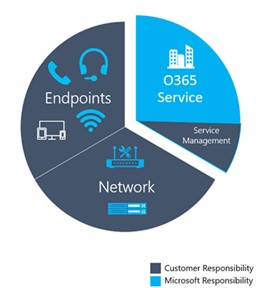
Given the rush with which Microsoft Teams was implemented in many organizations a few years ago, it’s understandable that not everything was thought through immediately. The priority during forced remote work was enabling communication and meetings. As a result, Teams was often introduced quickly. Following this, employees were equipped with the right devices, such as headsets and cameras, to work comfortably from home. However, an optimal hybrid work model starts with a solid network. It’s time to focus on this aspect.
For an excellent user experience in Microsoft Teams, three key factors are influential: Endpoints, Service, and Network. As Microsoft itself illustrates, the network is accountable for one-third of the entire Teams experience. Many believe that most effort goes into maintaining Teams, but network management is often a more time-consuming and underestimated aspect.

To fully prepare your network for Teams implementations, you will encounter several challenges:
It’s now time to seriously address these challenges. But where do you start?
A solid network is the foundation of an efficient work environment. Before we start a Teams implementation, we always conduct a thorough network assessment to determine whether the network is suitable for Teams. This involves monitoring your network for several weeks and mapping out exactly what is needed to ensure optimal functionality of your Teams environment.
Common network issues when using Teams include:
Fortunately, these issues can be resolved quickly, even if your network is already implemented.
The solution to the challenges of network management is quite simple: cloud networking! This allows you to easily prioritize Microsoft Teams over other applications within your network. Additionally, you can flexibly manage your network via a cloud dashboard from any device and location. Whether you’re in the office or on the beach, you can easily add new locations or block specific applications with one click. The flexibility and control are limitless. A cloud network is always up to date, minimizing human errors and drastically reducing the chance of security incidents.
A good solution within a cloud network is Quality of Service (QoS) technology. This allows you to prioritize certain network activities, such as video calls or phone conversations, over other processes. Think of it as creating a ‘virtual express lane’ in your network. This prevents essential communication components from experiencing delays, while less urgent tasks like downloads, can take a few extra seconds. This way, you get the most out of your existing bandwidth without costly upgrades.

Want to know if your network is ready for the next step? Or have you already made the switch, but your network still needs optimization? We’d be happy to assist you with a thorough network assessment to ensure your network meets all requirements for an efficient and secure workplace. Contact us for a no-obligation consultation.
Share article